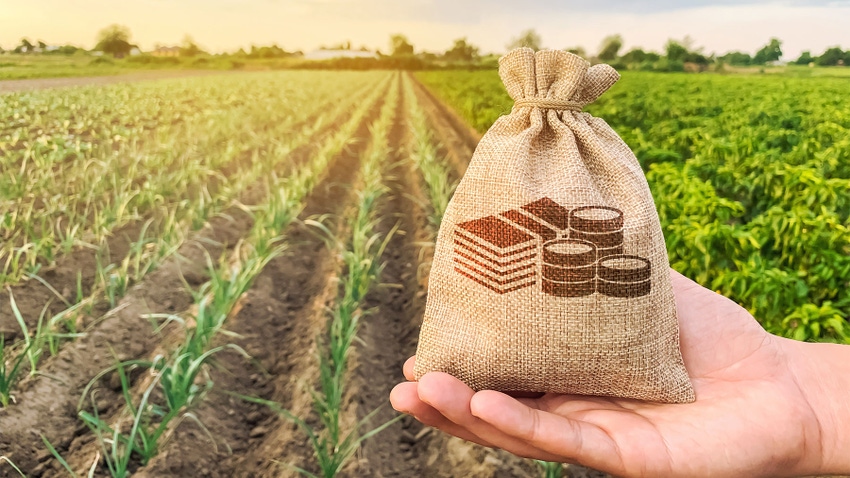
Mirroring the national trend, cropland cash rental rates across the region were up again this year.
Survey data from the National Agricultural Statistics Service show Ohio with the highest average cash rental rate at $178 an acre, followed by Michigan at $148 an acre.
Pennsylvania’s average cropland cash rental rate is $107 an acre, while New York’s is $79.50 an acre. The lowest cropland cash rental rate is in West Virginia at $45 an acre.
Renting irrigated land costs most in Massachusetts — home to a large cranberry-growing industry —at $301 an acre, followed by Michigan at $259 an acre, Ohio at $225 an acre and Maryland at $212 an acre.
Rented pastureland costs most in Maryland at $50.50 an acre, and costs least in West Virginia at $14 an acre.
Still less than average
The average cropland cash rental rate in the U.S. is $155 an acre this year, up $7 from last year, while the national average for rented irrigated land is $237 an acre, up $10 an acre, and nonirrigated land is at $142 an acre, up $7 an acre.
Rented pastureland averages $15 an acre, up $1 from last year.
Ohio is the only state in the region where the average cash rental rate and average nonirrigated cash rental rate is higher than the national averages. Irrigated cash rental rates in Massachusetts and Michigan are higher than the national average.
On the flip side, West Virginia is the only state in the region where the pastureland rental rate is less than the national average; most states are much higher.
How the survey is conducted
The NASS Cash Rents Survey was conducted from mid-February to June. About 280,000 farms and ranches across the U.S. were contacted for their total acres operated and acres rented for cash for each land-use category.
How to use
You can access the tool and do your own research at bit.ly/44dJd0C.
You will need to specify “geographical regions” and “years.” In most cases, you will be able to get irrigated and nonirrigated cropland rental rates, as well as pastureland rental rates.
County-level cash rental rates will be released later.
Other resources
Of course, there are many resources out there if you’re interested in renting land or want to lease some of your land to another grower.
This Farm Progress article from 2017 has some good tips on how to negotiate a land rental rate.
Some states do their own cash rental surveys. The Western Ohio Cropland Values and Cash Rents survey is online but has not been updated yet for this year. The results are summarized for western Ohio, with regional summaries for northwest Ohio and southwest Ohio.
NY Farmland Finder has an online checklist for pricing rented acres, as well as a guide for leasing farmland.
Iowa State Extension’s Ag Decision Maker also has a handy guide for computing cash rental rates.
Here are the 2023 cash rental rates by state in the mid-Atlantic and Northeast, as well as Michigan and Ohio:
Connecticut
Nonirrigated: $85 an acre, down from $86 an acre
Delaware
Average: $123 an acre, up from $117 an acre
Irrigated: $183 an acre, up from $174 an acre
Nonirrigated: $97.5 an acre, up from $94.5 an acre
Maine
Nonirrigated: $69 an acre, up from $60 an acre
Maryland
Average: $123 an acre, up from $117 an acre
Irrigated: $212 an acre, up from $201 an acre
Nonirrigated: $117 an acre, up from $111 an acre
Pastureland: $50.5 an acre, down from $51 an acre
Massachusetts
Average: $112 an acre, up from $106 an acre
Irrigated: $301 an acre, up from $284 an acre
Nonirrigated: $90.5 an acre, up from $87.5 an acre
Pastureland: $27.5 an acre
Michigan
Average: $148 an acre, up from $144 an acre
Irrigated: $259 an acre, up from $243 an acre
Nonirrigated: $140 an acre, up from $137 an acre
Pastureland: $29.5 an acre, down from $32 an acre
New Hampshire
Average: $55.5 an acre, down from $56 an acre
Nonirrigated: $51.5 an acre, no change
New Jersey
Average: $82.5 an acre, down from $84.5 an acre
Irrigated: $144 an acre, up from $136 an acre
Nonirrigated: $70.5 an acre, down from $75.5 an acre
New York
Average: $79.5 an acre, up from $77 an acre
Irrigated: $172 an acre, up from $163 an acre
Nonirrigated: $78.5 an acre, up from $76 an acre
Pastureland: $25 an acre, no change
Ohio
Average: $178 an acre, up from $170 an acre
Irrigated: $225 an acre, up from $208 an acre
Nonirrigated: $178 an acre, up from $170 an acre
Pastureland: $26 an acre, up from $25.5 an acre
Pennsylvania
Average: $107 an acre, up from $101 an acre
Irrigated: $172 an acre, up from $162 an acre
Nonirrigated: $106 an acre, up from $100 an acre
Pastureland: $41.50 an acre, up from $40.5 an acre
Vermont
Average: $60.50 an acre, up from $58.5 an acre
Nonirrigated: $59.50 an acre, up from $58 an acre
Pastureland: $29 an acre
West Virginia
Average: $45 an acre, up from $41.50 an acre
Pastureland: $14 an acre, up from $12 an acre
About the Author(s)
You May Also Like






